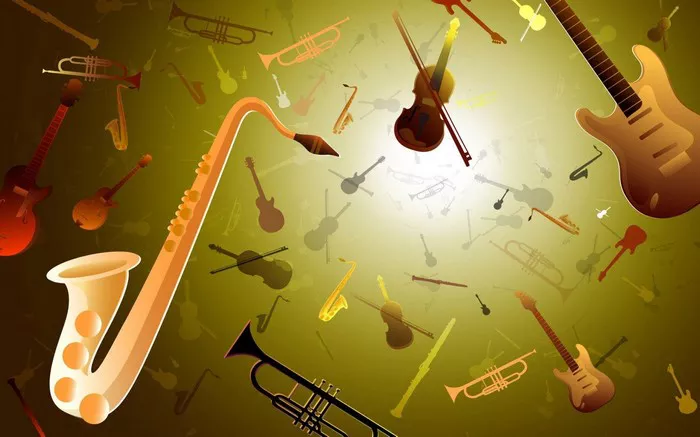Valuing Soviet era classical music on vinyl requires a blend of historical knowledge, musical appreciation, and a keen eye for detail. These recordings, produced from the 1920s to the early 1990s, offer a unique glimpse into the cultural and political landscape of the Soviet Union. This guide will help collectors and enthusiasts understand the key factors that influence the value of these records and how to identify and appraise them effectively.
I. Historical Context
The Soviet Union’s classical music scene was heavily influenced by state control and propaganda. Composers and performers were often required to align their works with the ideals of the Communist Party. Despite these constraints, many produced remarkable pieces that continue to be celebrated today. Understanding the historical context is crucial for valuing these records, as it provides insight into their significance and rarity.
II. Key Periods in Soviet Classical Music
Early Soviet Period (1920s-1930s): This era saw the rise of avant-garde and experimental compositions. Notable composers include Dmitri Shostakovich and Sergei Prokofiev.
Stalin Era (1930s-1950s): Under Stalin, the arts were heavily censored. Socialist realism became the dominant style, emphasizing accessible and optimistic themes.
Post-Stalin Era (1950s-1980s): A relative thaw in artistic expression allowed for more diversity in musical styles. Composers like Alfred Schnittke and Arvo Pärt emerged during this time.
Perestroika and Beyond (1980s-1990s): Gorbachev’s reforms led to increased artistic freedom and the end of state censorship, allowing for a resurgence of previously banned works and styles.
III. Factors Influencing Value
Several factors influence the value of Soviet era classical music on vinyl. These include the rarity of the record, the condition of the vinyl and cover, the reputation of the composer and performer, and historical significance.
1. Rarity
Rarity is a primary determinant of value. Limited pressings, especially those from the early Soviet period, are highly sought after. Records produced in smaller quantities or those that were banned or censored are particularly valuable. To assess rarity, research the number of copies originally produced and how many are believed to have survived.
2. Condition
The condition of both the vinyl and its cover significantly affects value. Records should be free from scratches, warps, and other defects. Covers should be intact, with minimal wear and tear. Use the Goldmine Standard for grading records, which ranges from Mint (M) to Poor (P), to determine the condition accurately.
3. Composer and Performer Reputation
The reputation of the composer and performer also plays a crucial role in valuation. Works by renowned composers like Shostakovich, Prokofiev, and Tchaikovsky are generally more valuable. Similarly, performances by famous conductors and orchestras, such as the Leningrad Philharmonic, add to a record’s worth.
4. Historical Significance
Records with historical significance, such as those documenting premiere performances or featuring politically charged works, are highly prized. Researching the background of a recording can uncover its historical context and enhance its value.
IV. Identifying Authentic Soviet Vinyl Records
Authenticating Soviet era vinyl records involves examining several key features, including labels, matrix numbers, and cover art.
1. Labels and Matrix Numbers
Soviet vinyl records were produced by state-owned companies like Melodiya. Authentic records will have labels with Cyrillic text and the company’s logo. Matrix numbers, etched into the vinyl near the label, can provide information about the pressing plant and date of production.
2. Cover Art
Cover art varied widely throughout the Soviet era. Early covers often featured minimalist designs, while later covers incorporated more elaborate artwork. Pay attention to the quality of the printing and any distinctive marks that could indicate a counterfeit.
V. Notable Soviet Era Composers and Their Works
Familiarity with key composers and their notable works is essential for valuing Soviet era classical music on vinyl. Here are some prominent figures and their significant contributions:
1. Dmitri Shostakovich
Symphony No. 7 (Leningrad): Written during the Siege of Leningrad, this symphony is a powerful symbol of resistance against fascism.
String Quartet No. 8: Dedicated to the victims of fascism and war, this work reflects Shostakovich’s personal and political struggles.
2. Sergei Prokofiev
Peter and the Wolf: A beloved children’s tale set to music, this composition remains one of Prokofiev’s most popular works.
Romeo and Juliet: Prokofiev’s ballet score for this Shakespearean tragedy is celebrated for its emotional depth and innovative orchestration.
3. Aram Khachaturian
Sabre Dance: A dynamic and energetic piece from the ballet Gayane, Sabre Dance is one of Khachaturian’s most recognized works.
Spartacus: This ballet score, with its lush melodies and dramatic flair, is a testament to Khachaturian’s compositional skill.
VI. Tips for Collectors
Collecting Soviet era classical music on vinyl can be a rewarding endeavor. Here are some tips to help you build a valuable collection:
1. Research and Educate Yourself
Knowledge is power. Educate yourself about the historical context, key composers, and significant recordings. Books, online resources, and collector forums are valuable sources of information.
2. Attend Record Fairs and Auctions
Record fairs and auctions are excellent places to find rare Soviet vinyl. Networking with other collectors can also provide leads on valuable records.
3. Inspect Records Carefully
Always inspect records and covers carefully before purchasing. Look for signs of damage, authenticity markers, and any other features that might affect value.
4. Store Records Properly
Proper storage is essential to maintaining the condition of your records. Store them vertically, in a cool, dry place, away from direct sunlight. Use protective sleeves for both the vinyl and cover.
5. Keep Records Clean
Regularly clean your records to prevent dust and dirt buildup. Use a soft brush or a record cleaning machine for the best results.
See Also: Classical Music for Kids: A Deep Dive into Timeless Melodies
VII. Conclusion
Valuing Soviet era classical music on vinyl involves a combination of historical understanding, careful inspection, and market knowledge. By appreciating the cultural and historical significance of these recordings, collectors can make informed decisions and build valuable collections. Whether you are a seasoned collector or a newcomer, this guide provides the foundation needed to navigate the fascinating world of Soviet vinyl records.

